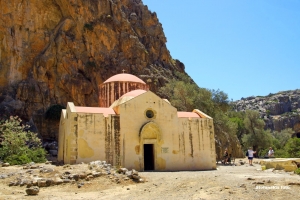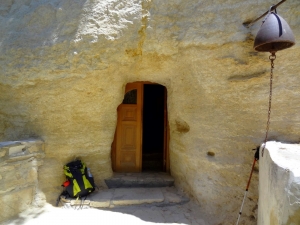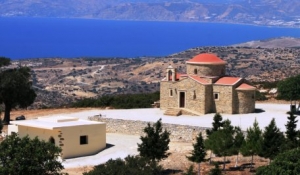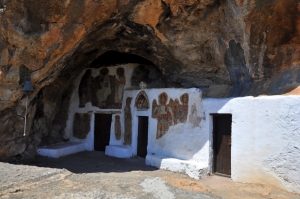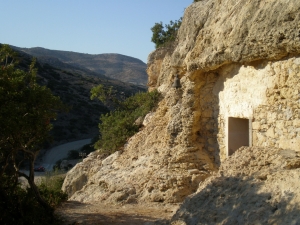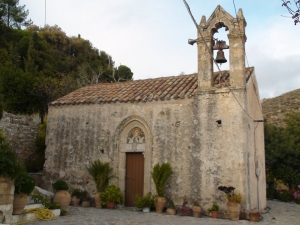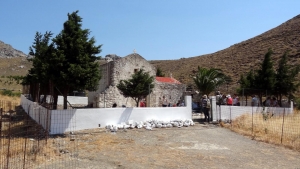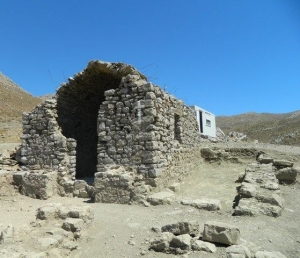The name of the gorge Agiofaraggo means “Saints’ gorge” and indicates that it was used by many hermits who stayed here because of the isolation of the area. According to a legend, three hundred hermits lived here in absolute isolation from each other. They met only once a year at “Goumenospilio” and then they were aware of those who had died the previous year.
At the beginning of the route in Martsalos Gorge you will find the lovely church of Panagia Martsaliani, dedicated to the Annunciation. The church, built in a cave, was used as a catacomb at the time of Christian persecutions. Just a few centuries earlier, it came back to light by chance, when a shepherd found it and realized that it was covered by rocks.
The Monastery of the Saints Eftychiani was located at hill Raxos and was dedicated to the local Saints Eftychianos, Eftychios and Kassiani. Near the ruins of the first temple, a new was inaugurated in 2009. In 2011 the monastery restarted its operation as a nunnery.
Agios Ioannis (Saint John) settlement is named after the small monastery of Saint John, which is built inside a two-level cave and has very old frescoes, dating back from 1360.
The cavernous chapel of Agia Kyriaki is located at the site of a former Minoan sanctuary. The main characteristic of the temple are the various loops inside the temple, on which the hermits and monks tied themselves during praying so as not to fall asleep. Another explanation for the existence of these loops is that during the years of the Arab rule, the cave was used as a prison and place of torture.
Kapetaniana village is located on the site of the former Monastery of the “Lord Have Mercy”, one of the most important centers in Crete for monasticism where arts and culture flourished. During the Ottoman Era the monastery was abandoned.
The former monastery of St. Paul (13-14th century) is located near the village Paranimfi near a spring. All around, we see traces of an ancient temple, which was looted. The church is a basilica with single nave and there are traces of frescoes.
The ruined monastery of the Three Hierarchs is located at one of the most inhospitable areas of Crete, at position Lousoudi of the wild Asterousia Mountains. It was founded in the 14th century near the peak of Kofinas, at an altitude of 880m.











